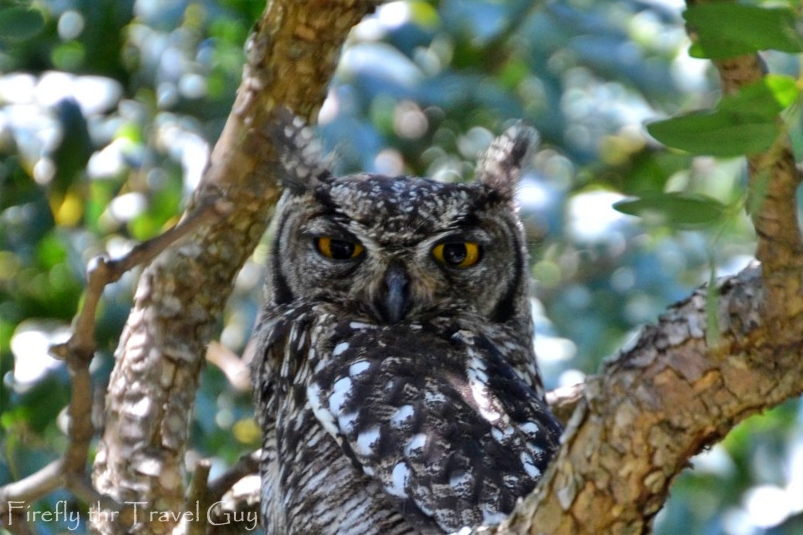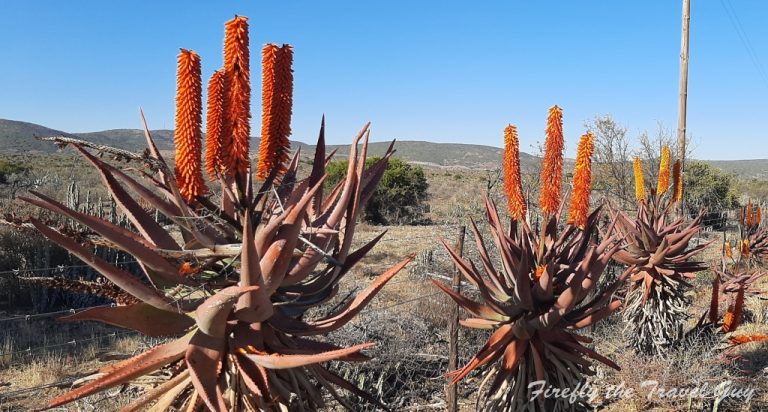
I was busy in the back garden and got the feeling that I was being watched. I looked up into my neighbour’s tree and noticed the owner of the eyes sitting on a branch. The owner turned out to be a Spotted Eagle-Owl. They are around as I’ve heard them on occasion and have spotted them a couple of times while on a late-night neighbourhood watch patrol. It was just weird to see him sitting there during the day and checking later the afternoon he was still there. He even allowed me to go and fetch my camera and get a photo of him. Since my encounter with him, I’ve decided to put up an owlbox in the back corner of the yard against an old telephone pole. Perhaps I’ll see them around more often.
Spotted Eagle-Owl (Bubo africanus): Bubo is the genus name for the Eagle-Owls.The name was probably derived from the owl’s call ‘uhu’ and is an ancient name that was borrowed into many languages. The species name, africanus, means ‘from or of Africa’, where this species occurs. They’re a large, gray-brown owl with bright yellow eyes, erect ear-tufts, and finely-barred belly and lower breast. The default large owl throughout its range; they occur in a broad range of lightly-wooded habitats, including suburbia.
Spotted Eagle-Owls are nocturnal. They roost during the day, either in trees or among rocks. At sunset, they fly out to a perch to hunt. From the perch they scan the ground for movement, using both their eyes and ears to detect it, flying silently in pursuit of whatever suitable prey they see. Its prey mainly consists of rodents, small mammals, birds, insects and reptiles, although it has a dietary preference for small mammals such as rodents and shrews. It often swallows its prey whole, with much head-jerking, pausing and resting in between, while a portion of the prey remains inside the mouth until the prey can finally be swallowed down completely. Undigested substances such as feathers and bone are regurgitated within the next 24 hours of ingestion in the form of a pellet.



